Types of partition structures
There are 3 main types of glass partitions: some are immovable, like a wall, others fold, and others can be moved from place to place.
Stationary
Stationary glass partitions are most often used in interiors. There are all-glass and combined (with metal, wood). Installation is carried out during repairs and involves fixing the partitions to the floor, ceiling, and walls.
Stationary models can function as a wall, or be more functional – supplemented with openings or doors. In this case, the door is only part of the structure; the main barrier remains in place when opened.
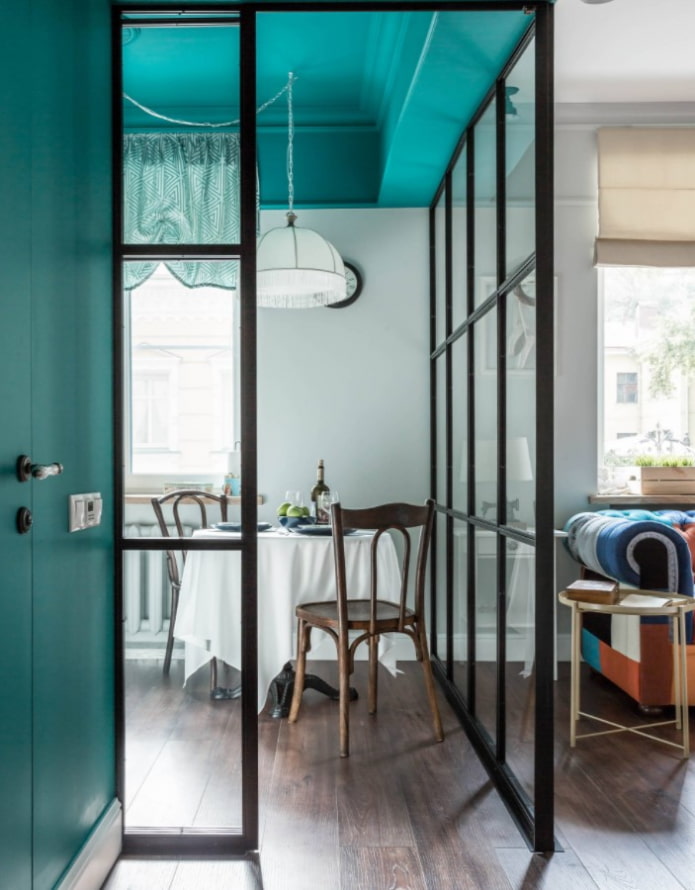
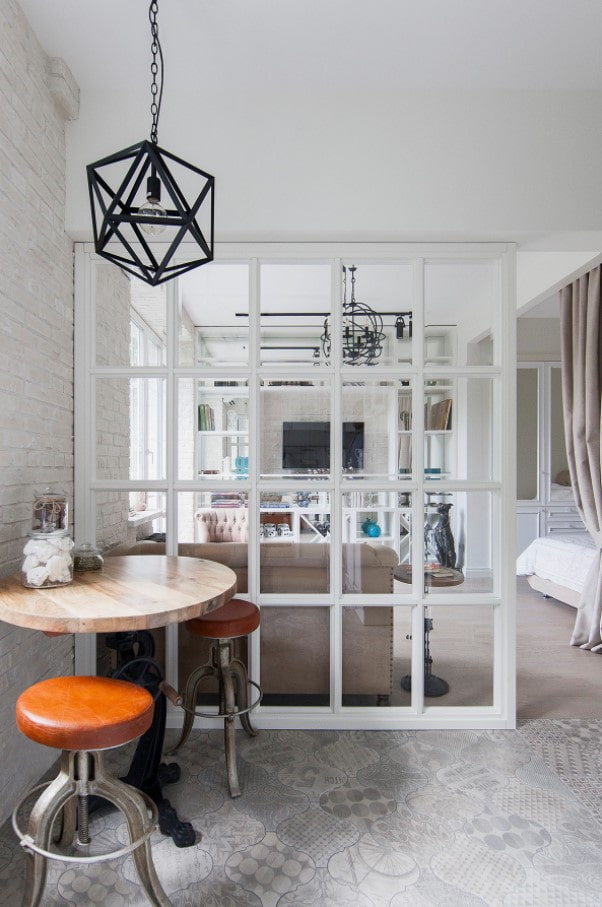
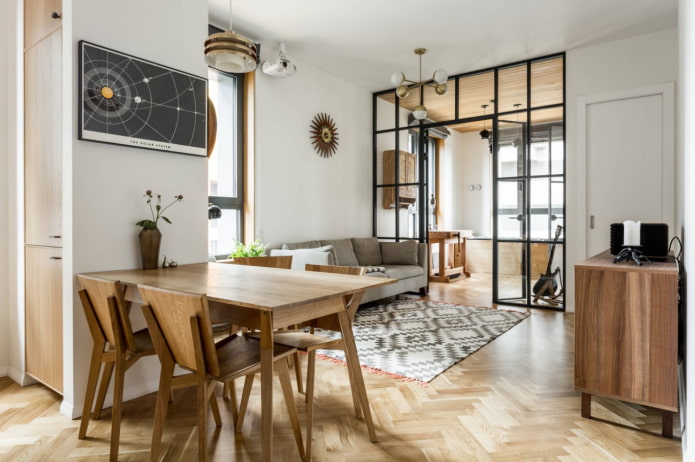
The photo shows a glass wall with a double door
Sliding
If zoning of an apartment is not always necessary and the ability to remove a glass partition is needed, a structure in the style of a sliding wardrobe or accordion is created. That is, the elements either move along rails, running into each other, or fold according to the accordion principle.
Both structures can be completely closed or opened by removing the wall. Of course, even when folded, they will remain visible, but this method is visually easier than the previous stationary one.
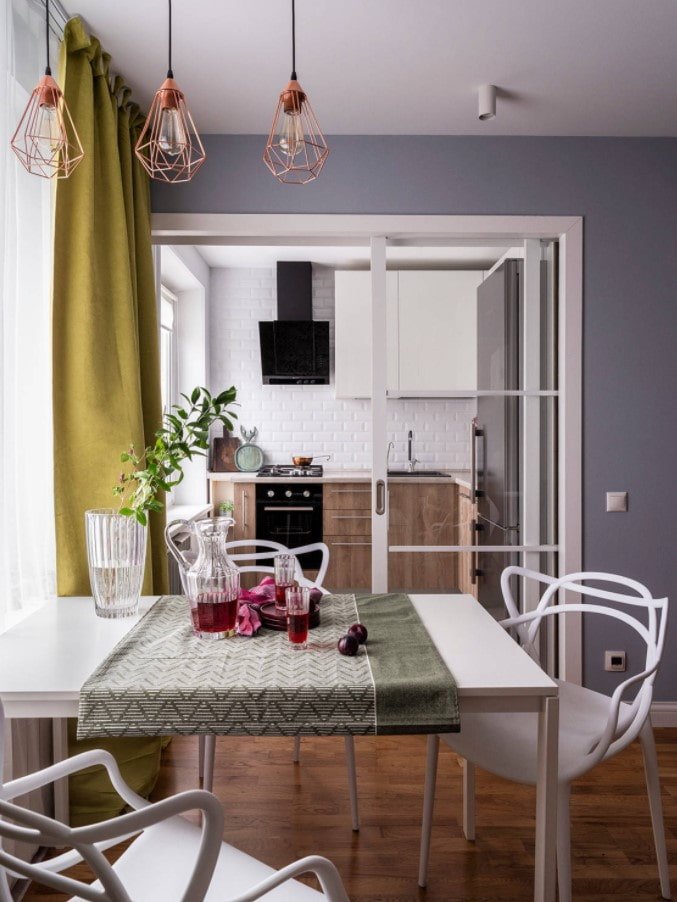

Mobile
An interesting solution in the form of glass screens is almost never used in residential interiors: but such stands are often used to separate work places in open offices, so as not to do expensive finishing.
When planning to use mobile partitions at home, remember: not only are they fragile, they are also unstable. Therefore, in apartments with children or animals, it is better to opt for stationary models.
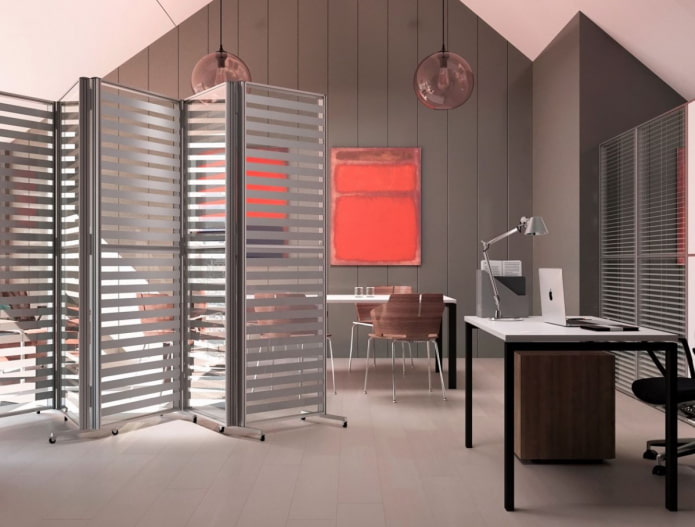
Pros and cons
Before getting to know glass partitions even better, let’s look at their advantages and disadvantages.
Pros:
- They leave the space free. Transparent screens zone the room without visually cluttering it.
- They let in sunlight. Partitions with glass, dividing the room into 2 parts, allow you to keep natural light in the area without a window.
- Do not let in extraneous odors. Sealed doors and partitions between the kitchen and the living room will not allow the aromas of food to permeate your favorite sofa.
- Do not take up much space. Installing thin frames with glass requires much less space than walls made of other materials.
Cons:
- They can break. Glass is easy to break, and its fragments can cut you. Therefore, we use special tempered glass: it is several times stronger, and therefore safer.
- Require careful maintenance. Washing a large interior partition from floor to ceiling, and even without streaks, is not an easy task.
- They do not hide anything. A transparent partition used to separate a bathroom or bedroom cannot provide 100% privacy. It is better to take a matte one or complement the decorative wall with thick curtains.
If the negative aspects of glass partitions do not scare you, let’s move on: consider the types of glass design.
Design options
The appearance of glass partitions differs not only in shape, but also in glass finishing.
Transparent glass
A classic of the genre – it transmits light well, does not look bulky even in black frames, suits most styles.
There is only one minus – everything is visible. Therefore, if you need to hide something, it is better to choose another option.
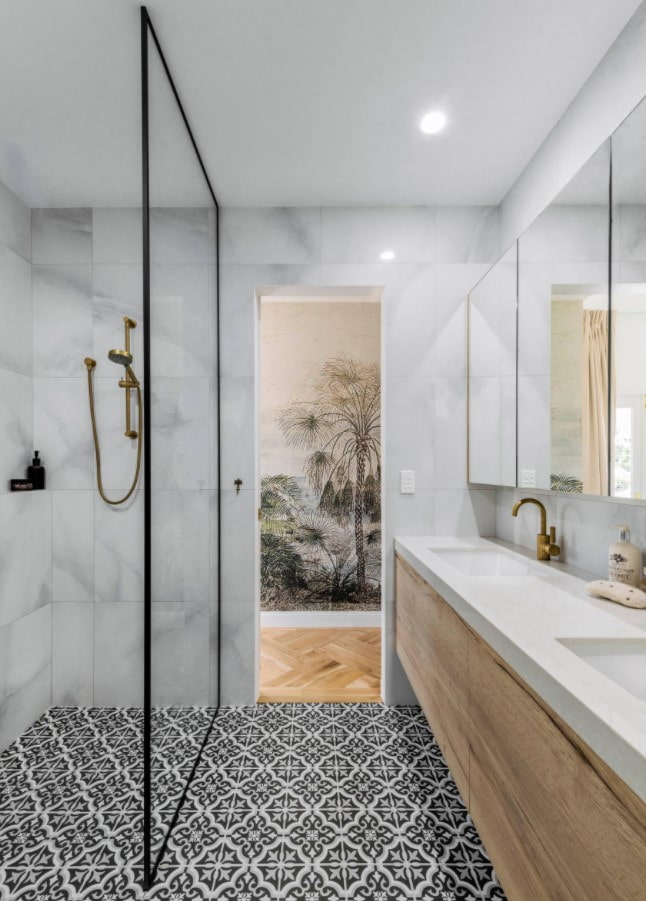
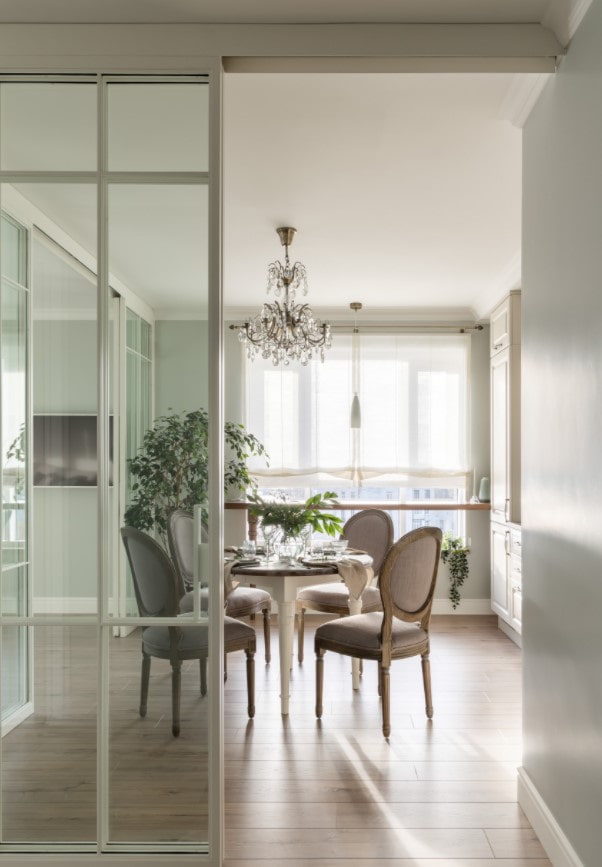
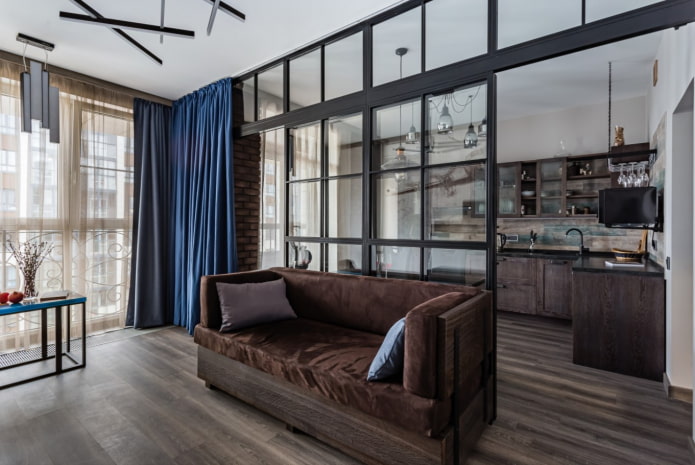
The photo shows a glass and metal structure in a studio
Frosted glass
After abrasive treatment, the glass becomes frosted: only silhouettes are visible through it. Therefore, such options are convenient to use for separating a shower, toilet, dressing room.
But matte surfaces look a little more bulky, dense.
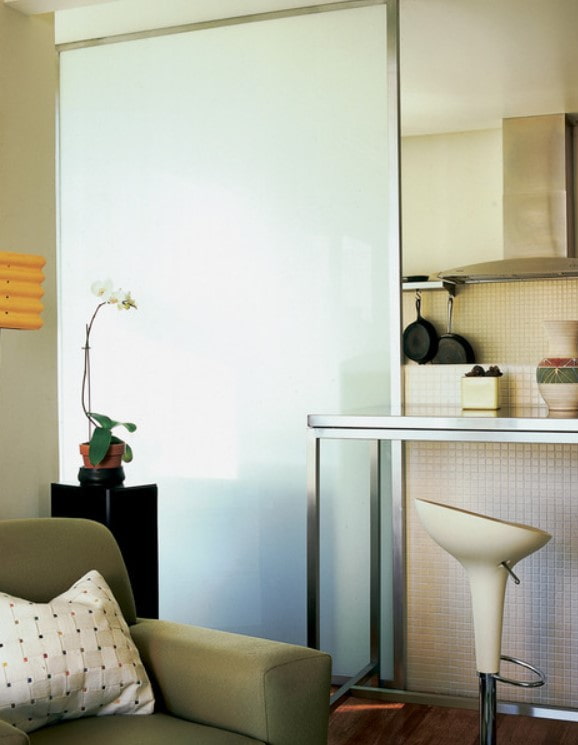
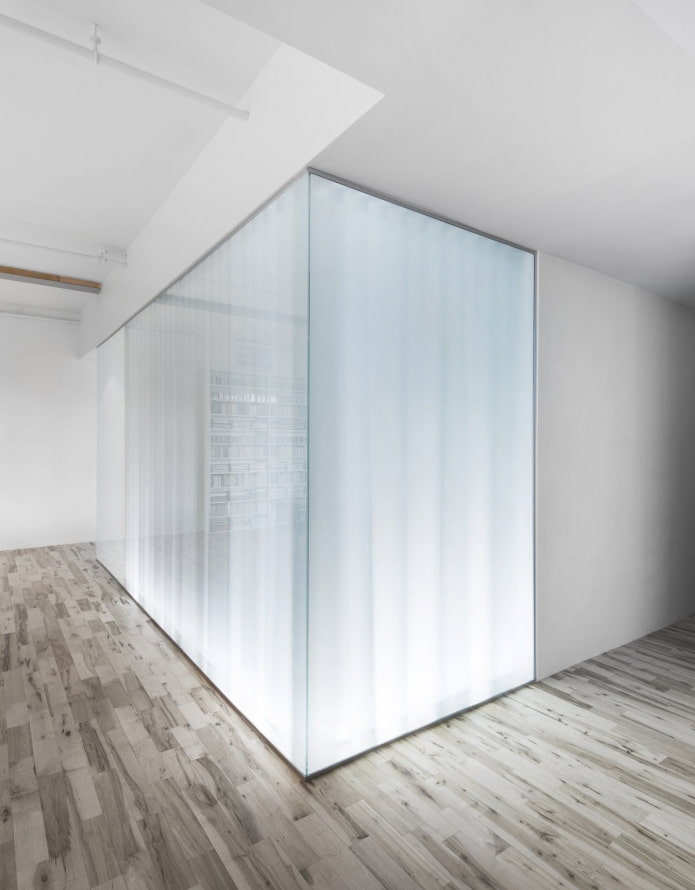
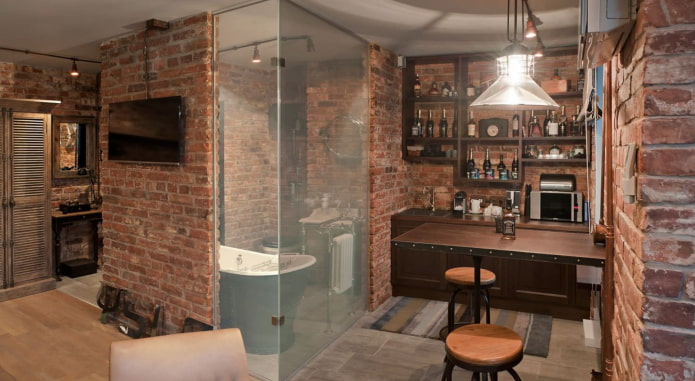
Tinted glass
Thanks to a special film, the glass turns into colored glass in a matter of minutes. The shade depends on personal preferences – from classic black or brown to yellow, red, blue, green. Films can even be mirrored.
Dark glass is not only decor, but also excellent protection from the sun. They are placed on the partition in bedrooms located opposite the southern windows.
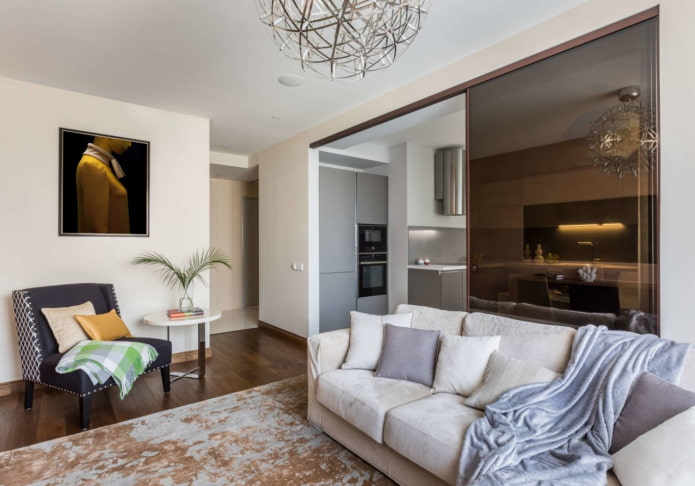
The photo shows a tinted screen in the kitchen-living room
Ribbed glass
Is there an option to preserve transparency, but hide what is happening? Of course – use relief! Only blurred silhouettes will be visible through the ribbed inserts, while the lightness of the structure will be preserved.
The choice of patterns is wide: stripes, squares, circles, grids, drops, strokes, waves, crushed ice and much more.
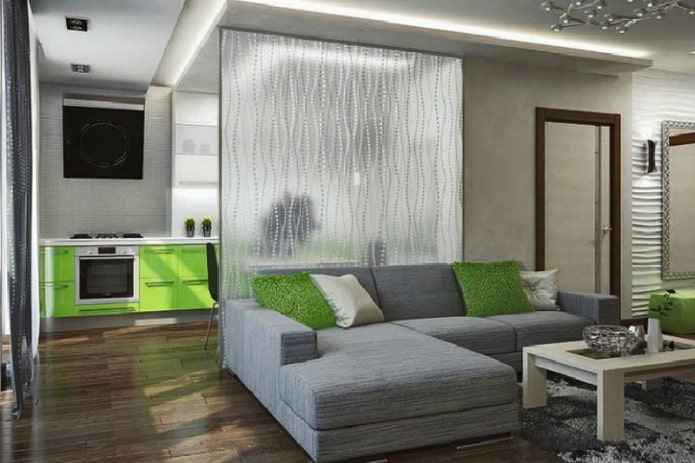
The photo shows a partition near the sofa with ribbed inserts
With a sandblasted pattern
Do ordinary glass seem boring? There are options with an abrasive pattern on sale: a special mechanism “scratches” the transparent base and a pattern appears on it.
Most often, plant motifs are used, but there are also animals, geometry, and abstraction. Some manufacturers can apply the pattern you need.
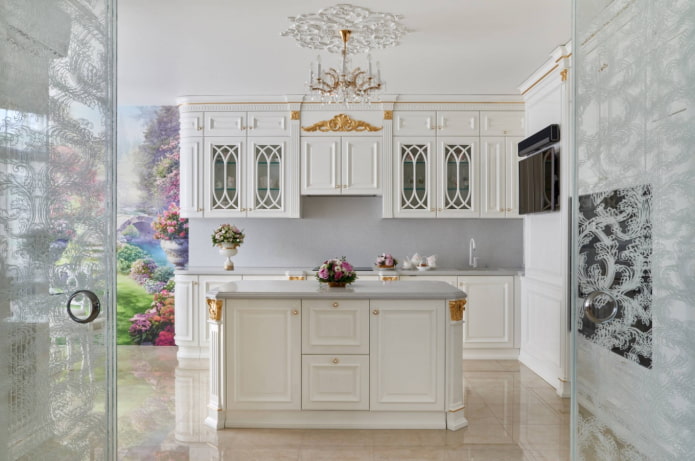
With stained glass and mosaic patterns
Bright glass mosaics and stained glass, which appeared in the 7th century, are still relevant today. But you should not overdo it with such colorful decor – a stained glass pattern on the entire wall will look too aggressive. But small screens or glass inserts will become a great accent.
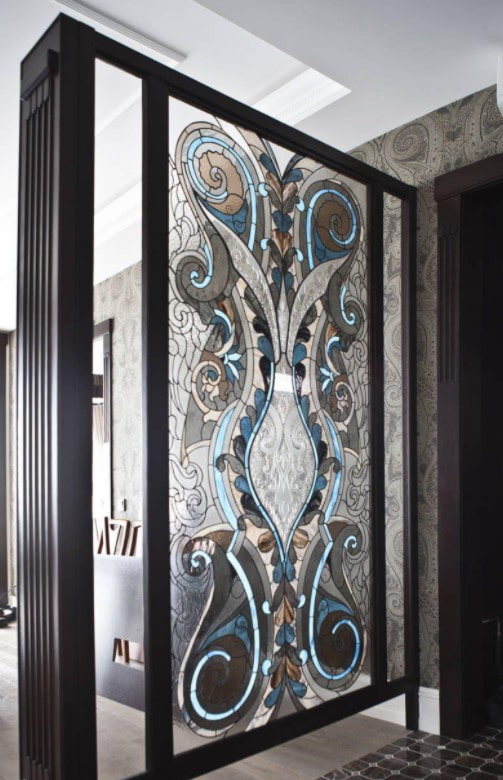
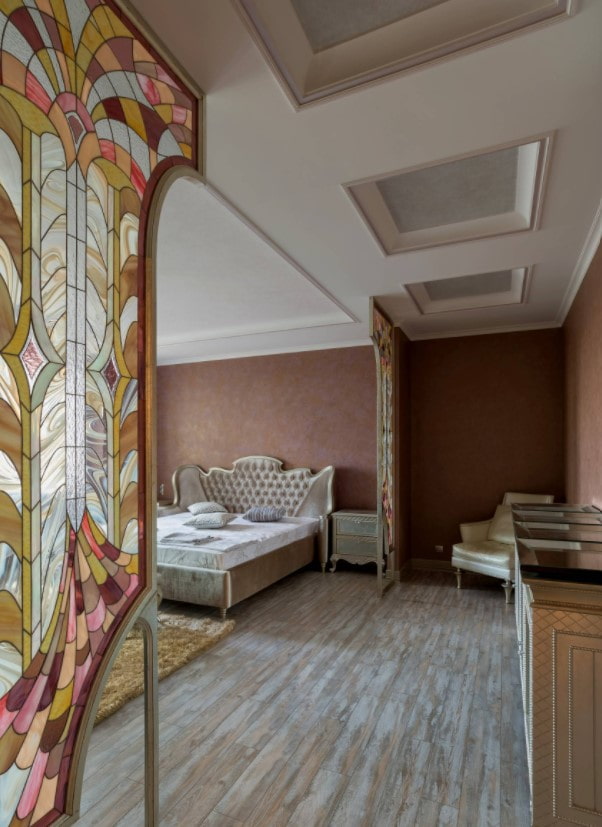
Glass blocks
The popularity of glass bricks is growing again. Modern designers increasingly use blocks in their projects because they are practical, inexpensive and attractive.
How exactly to use them depends on the specific task. Bricks are used to build interior walls and make small fences in showers.
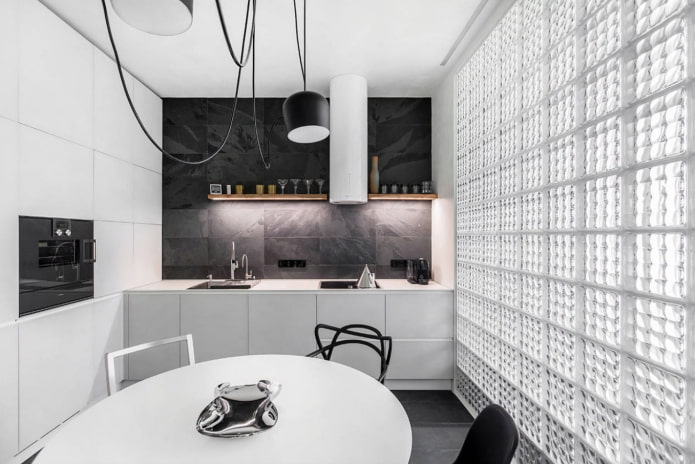
The photo shows a wall made of glass blocks
Partitions with glass inserts
If you can’t decide on a completely glass wall, add glass parts to a plasterboard, brick or wooden one: they will lighten the structure and increase light transmittance.
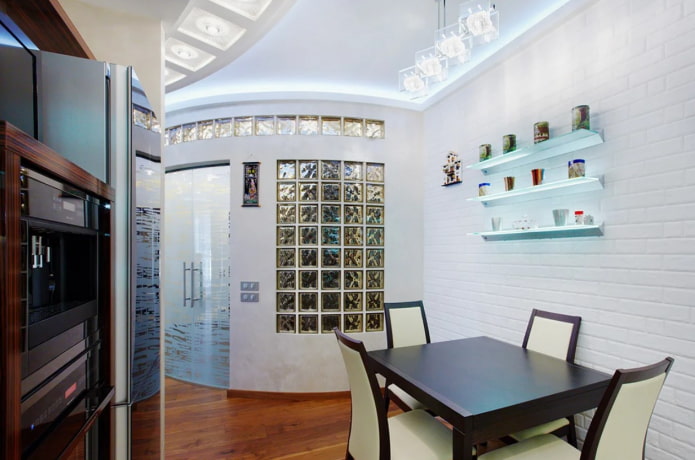
How does it look in the interior?
Most often, a glass partition can be found in a kitchen-living room. In this case, stationary ones are more hermetic, but if you install sliding ones, the rooms can be combined at any time.
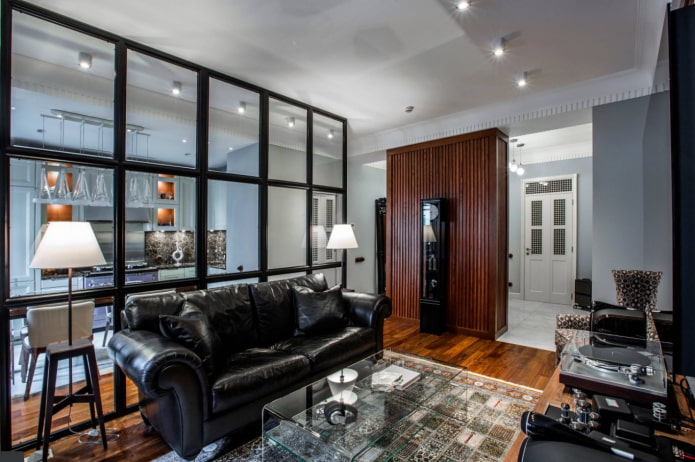
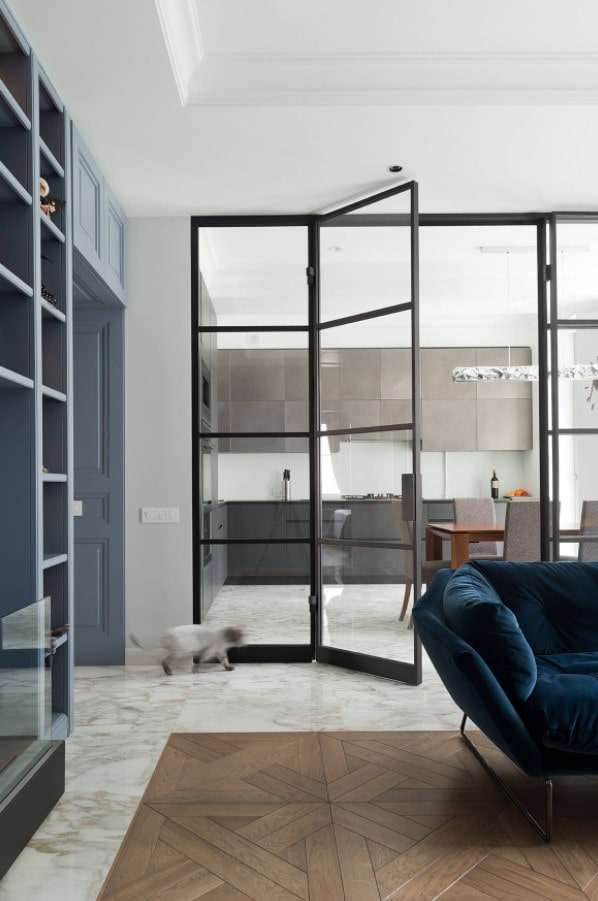
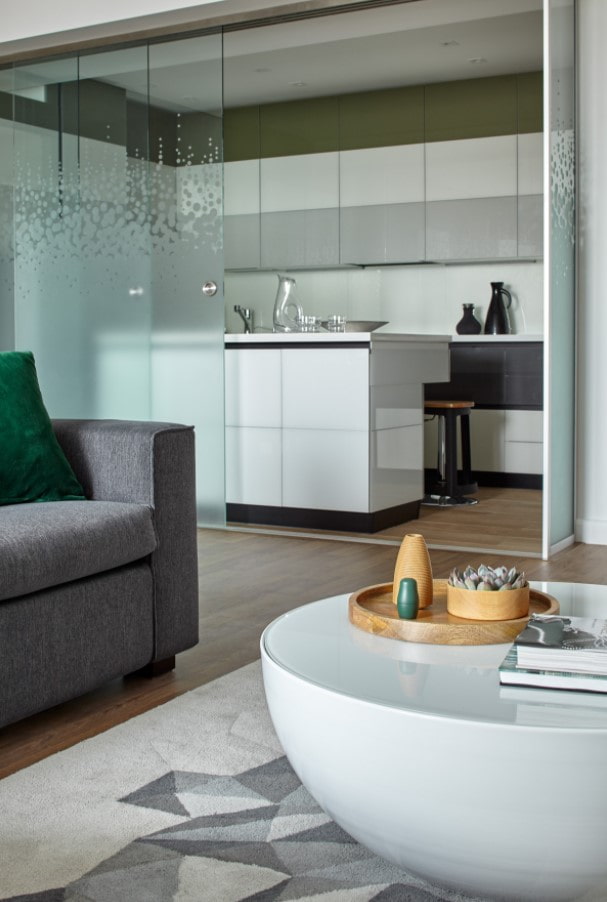
The second most popular areas between which glass walls will look appropriate are living room + bedroom or kitchen + bedroom. Glass is used to separate the sleeping area in small studios or spacious open lofts.
A bedroom with a glass partition allows light to enter freely during the day, and curtains create an intimate atmosphere in the evening.
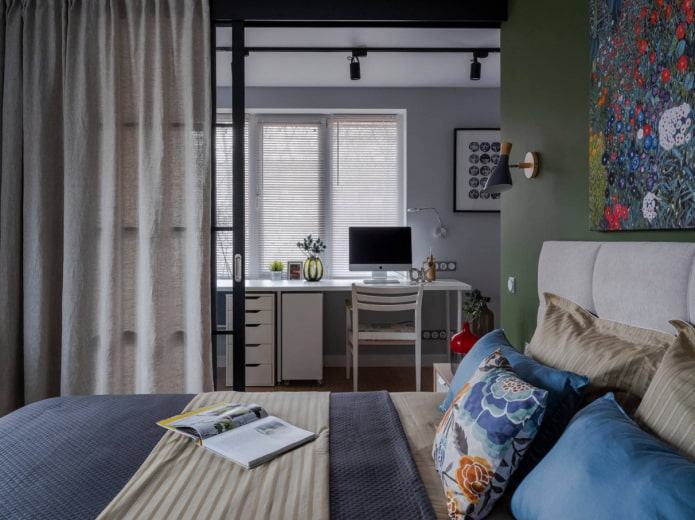
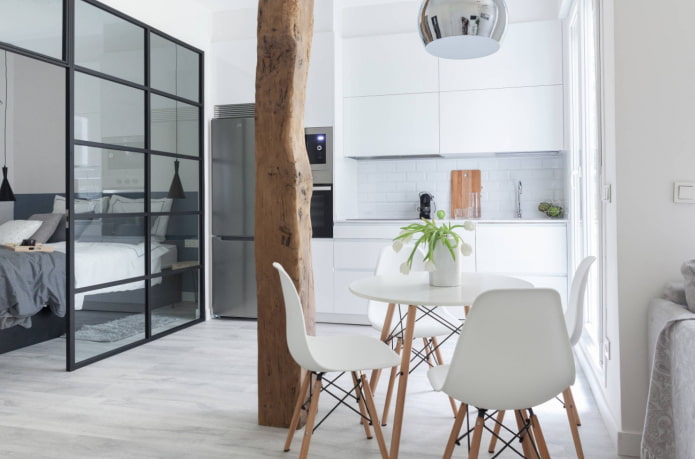
Often, small corridors in studios are separated with plexiglass partitions: thanks to the transparency, the room remains open, but dirt from the entrance area does not penetrate into the residential.
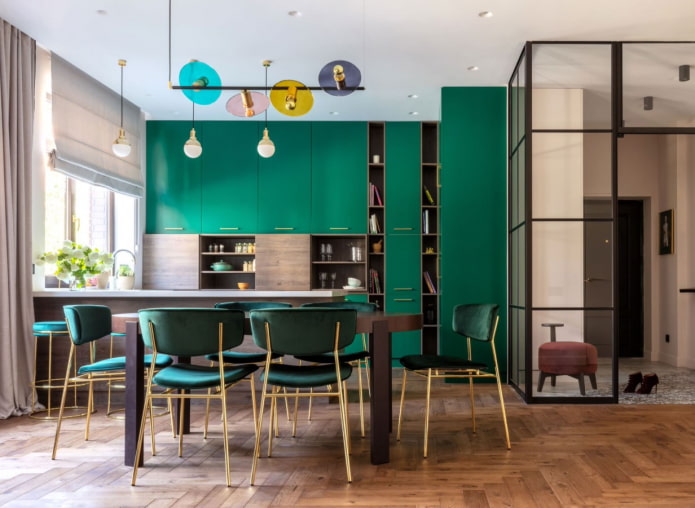
Special screens for bathrooms are becoming increasingly popular: they are more durable and more aesthetically pleasing than curtains, although to maintain the appearance you will have to constantly wipe off drops and smudges.
There are ready-made designs for showers or bathtubs, as well as the ability to order according to your size – however, the price for individual orders will be higher.
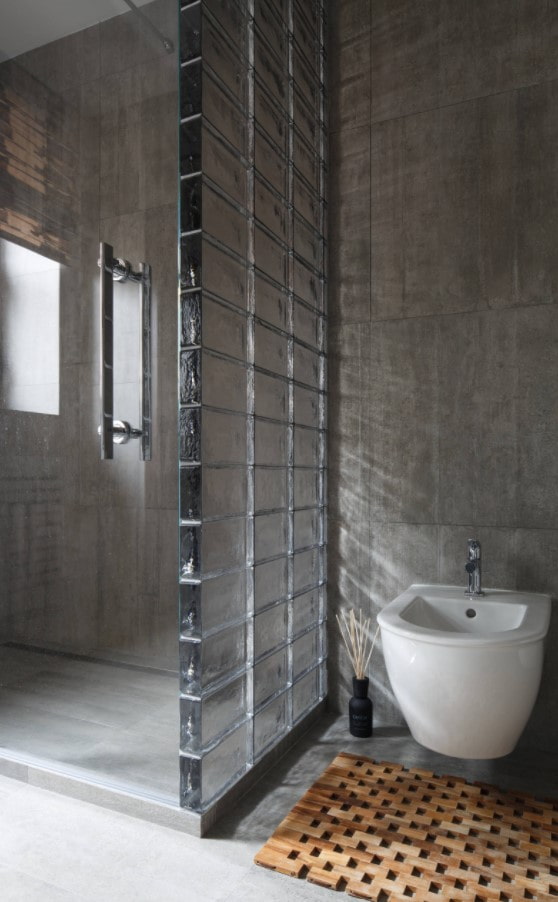
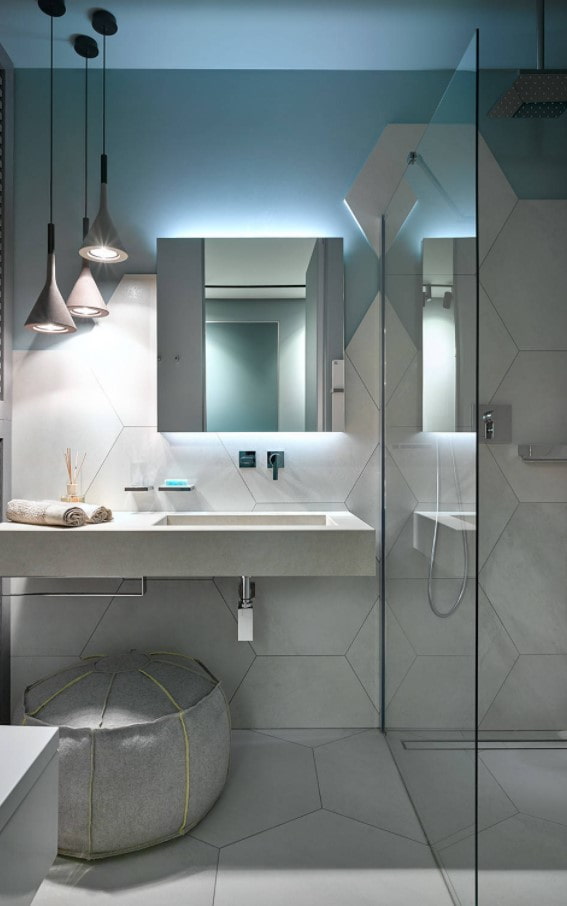
Glass partitions in rooms are stylish and modern! Feel free to replace plasterboard or brick floors with them, because they will definitely not go out of fashion anytime soon.
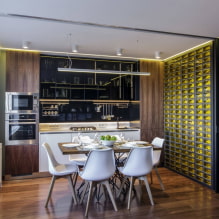
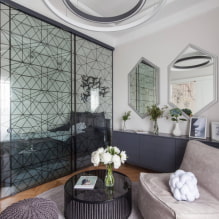
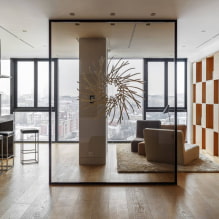
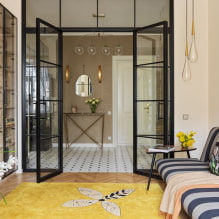
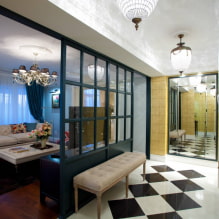
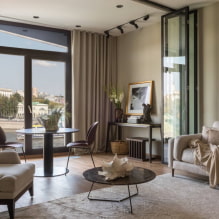
Now reading:
- Interior Design in Lavender Tones: 55+ Inspiring Ideas and Photos
- How to choose the best laminate for your apartment: class, thickness and important tips.
- 10 Stylish Countertop Design Ideas to Inspire You
- Kitchen sockets: placement tips and installation diagrams.
- Materials for kitchen facades: overview, advantages and disadvantages